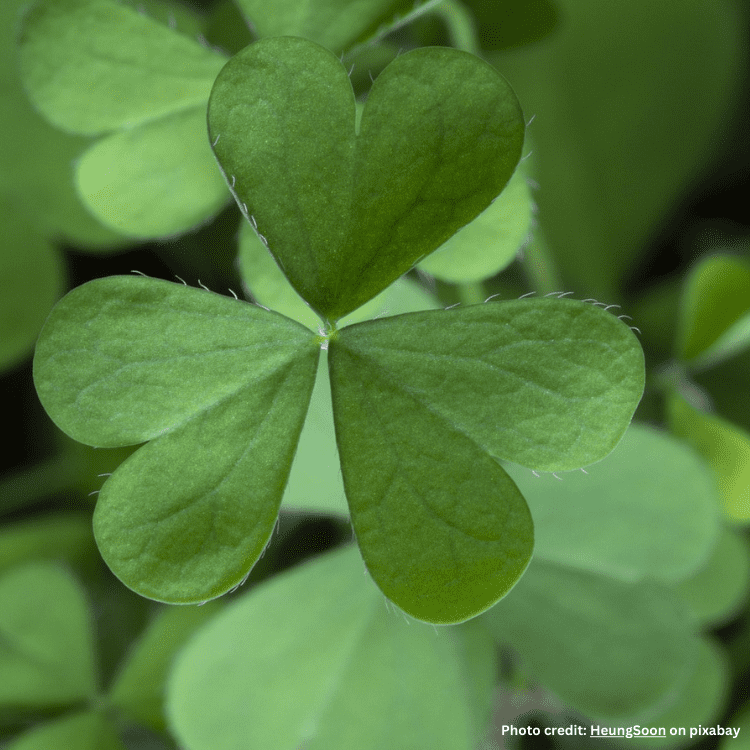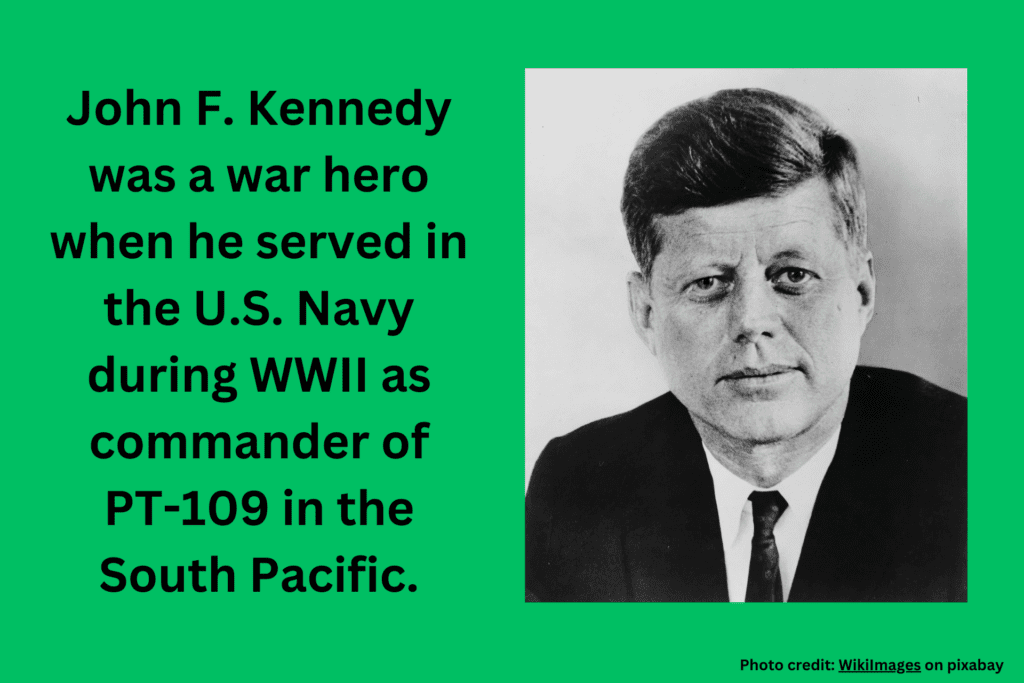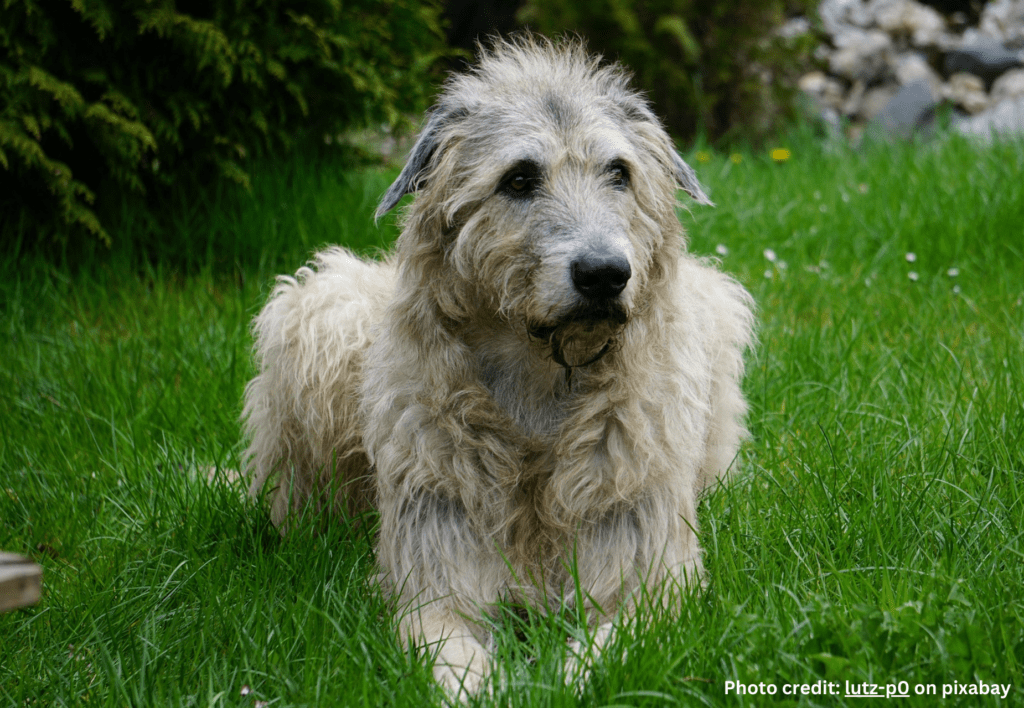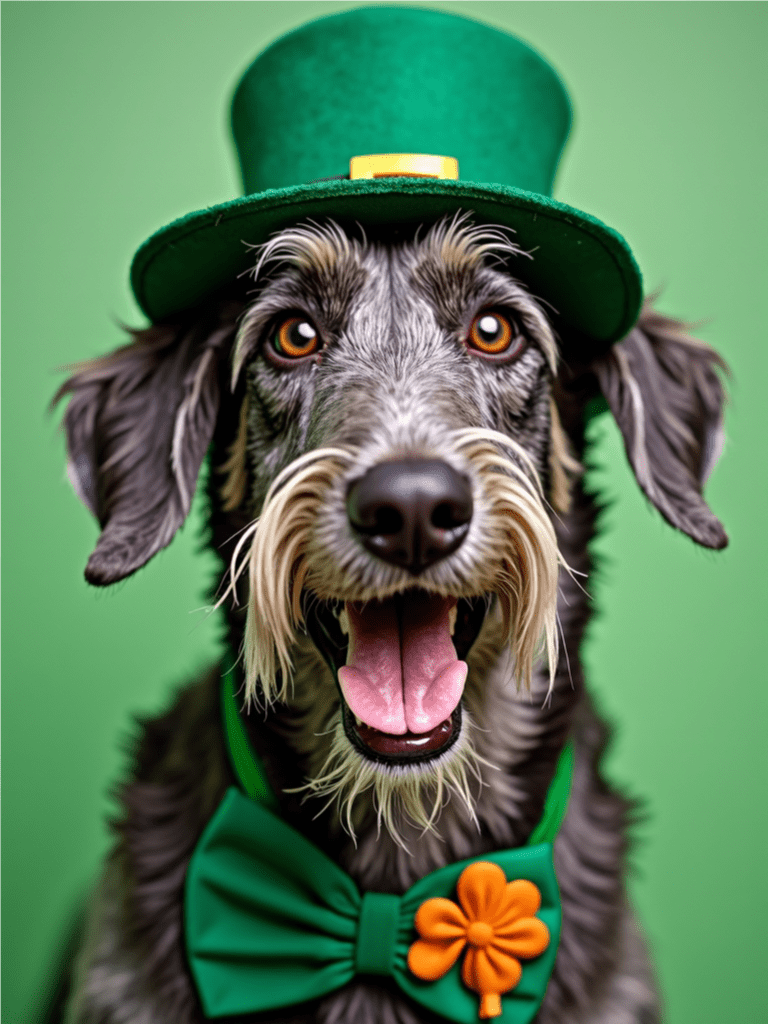St. Patrick’s Day began as a feast day to honor St. Patrick, the priest who brought Christianity to Ireland. It is said that St. Patrick used the three-leaf clover to explain the Trinity to his followers. He explained that, just as a plant could have three leaves on one stem, God could exist both as three and one, at the same time. And now, the shamrock is one of the beloved symbols of Ireland.

Another story about St. Patrick involves his confrontation with the last serpent in Ireland. According to legend, after banishing most snakes from the island, Patrick encountered a particularly stubborn serpent that refused to leave. The clever saint fashioned a small wooden box and challenged the snake to prove it could fit inside. When the curious serpent slithered in to demonstrate its flexibility, Patrick slammed the lid shut and tossed the box into the sea, thus completing his famous mission of ridding Ireland of snakes.
What makes this story particularly fascinating is that Ireland never actually had snakes in its post-glacial ecosystem. The serpents in these tales are widely believed to be symbolic of pagan practices and druidic religions that Patrick worked to convert to Christianity during his mission in the 5th century.
Celebrating Ireland and the Irish
Ireland is famous for quite a few distinctive contributions to world culture and history:
∙ Traditional music featuring instruments like the fiddle, tin whistle, and bodhrán drum, which has influenced folk and popular music globally.
∙ Literary giants including James Joyce, Oscar Wilde, W.B. Yeats, Samuel Beckett, and Seamus Heaney who have shaped world literature.
∙ Stunning landscapes with emerald-green countryside, dramatic coastal cliffs like the Cliffs of Moher, and unique geological formations such as the Giant’s Causeway.
∙ Guinness stout, Irish whiskey, and the social institution of the pub as a community gathering place.
∙ Celtic heritage and art, including intricate knotwork designs and illuminated manuscripts like the Book of Kells.
∙ St. Patrick’s Day celebrations that have become global cultural phenomena.
∙ Ancient sites like Newgrange, a prehistoric monument older than Stonehenge and the Egyptian pyramids.
∙ A rich mythology featuring figures like Cú Chulainn, the Tuatha Dé Danann, and numerous fairy folk including leprechauns.
∙ Irish dance, particularly step dancing, which gained worldwide popularity through shows like Riverdance.
∙ The Irish diaspora that has spread Irish culture worldwide following historical events like the Great Famine. One family fleeing the famine were the Kennedy’s, the ancestors of our own martyred president, John F. Kennedy. The family came to the U.S. and settled in Boston in the 1840’s. And guess who is considered the founder of the family? Another Patrick!

The Irish Wolfhound
Another proud symbol of Ireland is the Irish Wolfhound. And I’ll close with some fascinating facts about this delightful breed.
Historical Background of the Irish Wolfhound
The Irish Wolfhound’s story begins over two millennia ago, in the lush landscapes of Ireland. These majestic dogs were bred by the ancient Celts to hunt wolves and other large game. Their name, “Wolfhound,” directly reflects their purpose and prowess. The Celts valued them not just for their hunting abilities, but also for their imposing presence and loyalty.
In ancient times, owning an Irish Wolfhound was a symbol of status and nobility. They were often given as royal gifts, signifying friendship and respect. The dogs were so esteemed that laws were enacted to protect them, ensuring that only the elite could possess them. This exclusivity added to their mystique and allure.
Cultural Significance in Irish History
Irish Wolfhounds hold a special place in Irish folklore and mythology. They are frequently depicted as guardians and protectors, often associated with heroes and warriors. One famous legend tells of the warrior Cú Chulainn, whose name translates to “Hound of Culann,” reflecting the deep connection between these dogs and Irish identity.
Besides their mythological significance, Irish Wolfhounds also served practical roles in history. They were used to guard homes and livestock, providing security and companionship. Their presence was believed to ward off evil spirits and bring good fortune, further cementing their status as cherished members of the household.
Impressive Traits and Characteristics
Irish Wolfhounds are renowned for their impressive stature and gentle nature. These characteristics make them stand out among other dog breeds, captivating the hearts of dog enthusiasts worldwide.
Physical Appearance and Size
Standing tall at the shoulder, Irish Wolfhounds are among the largest dog breeds in the world. Males typically reach heights of 32 inches or more, with females only slightly shorter. Despite their size, they possess a graceful and athletic build, allowing them to move with surprising agility.
Their coat is rough and wiry, offering protection against harsh weather conditions. Common colors include gray, brindle, and fawn, each adding to their majestic appearance. Regular grooming helps maintain their coat’s health and shine, preventing matting and tangling.

Temperament and Personality Traits
Despite their formidable size, Irish Wolfhounds are known for their gentle and friendly nature. They are often described as “gentle giants,” displaying a calm and patient demeanor. This makes them excellent companions for families, including those with young children.
Irish Wolfhounds are loyal and devoted to their families, forming strong bonds with their human companions. They are generally good-natured and get along well with other animals, provided they are properly socialized from a young age. Their temperament makes them well-suited for therapy work and other roles requiring a gentle touch.
Suitability for Families and Children
For families considering adding an Irish Wolfhound to their household, it’s important to understand their needs and characteristics. These dogs thrive in environments where they receive plenty of love and attention. Their gentle disposition makes them ideal for families with children, as they are patient and tolerant.
However, due to their size, it’s crucial to supervise interactions between Irish Wolfhounds and small children to prevent accidental injuries. Teaching children how to interact respectfully with these large dogs will help foster a harmonious relationship.
The Role of Irish Wolfhounds in Media and Culture
Irish Wolfhounds have made their mark in various forms of media and cultural representations. Their majestic presence and noble demeanor have captured the imagination of many, making them popular subjects in films, books, and folklore.
These dogs symbolize strength, loyalty, and courage, qualities that resonate deeply in storytelling. Their portrayal often highlights their role as protectors and companions, reflecting their historical significance and enduring appeal.
Famous Irish Wolfhounds in Films and Books
Irish Wolfhounds have graced the silver screen and the pages of literature, leaving a lasting impression on audiences. One notable example is the film “The Last of the Mohicans,” where a Wolfhound named Moyhanna appeared alongside the lead characters, adding to the film’s historical authenticity and emotional depth.
Portrayal in Irish Folklore and Legends
In Irish folklore, the Irish Wolfhound is often depicted as a guardian and warrior’s companion. These stories celebrate the breed’s bravery and loyalty, qualities that have made them revered figures in Irish culture. Legends like that of Cú Chulainn emphasize the deep bond between these dogs and their human counterparts, showcasing their significance beyond mere hunting companions.
Final Thoughts on the Irish Wolfhound’s Legacy
The Irish Wolfhound is more than just a breed; it’s a symbol of strength, loyalty, and history. Their majestic presence and gentle nature make them beloved companions and cherished members of the family. Owning an Irish Wolfhound is a unique experience, offering the opportunity to connect with a breed steeped in tradition and cultural significance.
St. Patrick’s Day Activity Pack
From the Official International Website of Ireland, here is a link to an activity pack to entertain and educate your kids. Following some history and legends, the pack includes instructions for making a shamrock and an origami sheep, a word search, a Snakes and Ladders game, and coloring pages. St. Patrick’s Day Activity Pack
***

Here are links to my blog indexes, which will make it quick and easy for you to find another post to read.
∙ Blogs with a Spiritual Theme
∙ Blogs about Books I Like: Fiction
∙ Blogs about Books I Like: Nonfiction
∙ Blogs for Holidays and Other Special Days
∙ Miscellaneous Blogs
